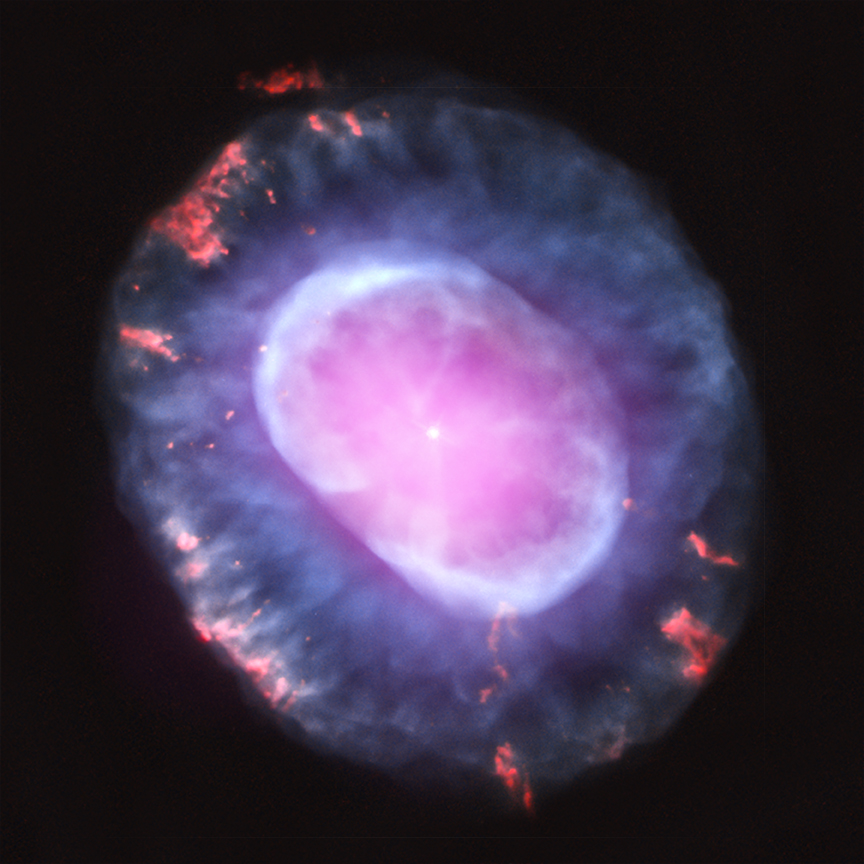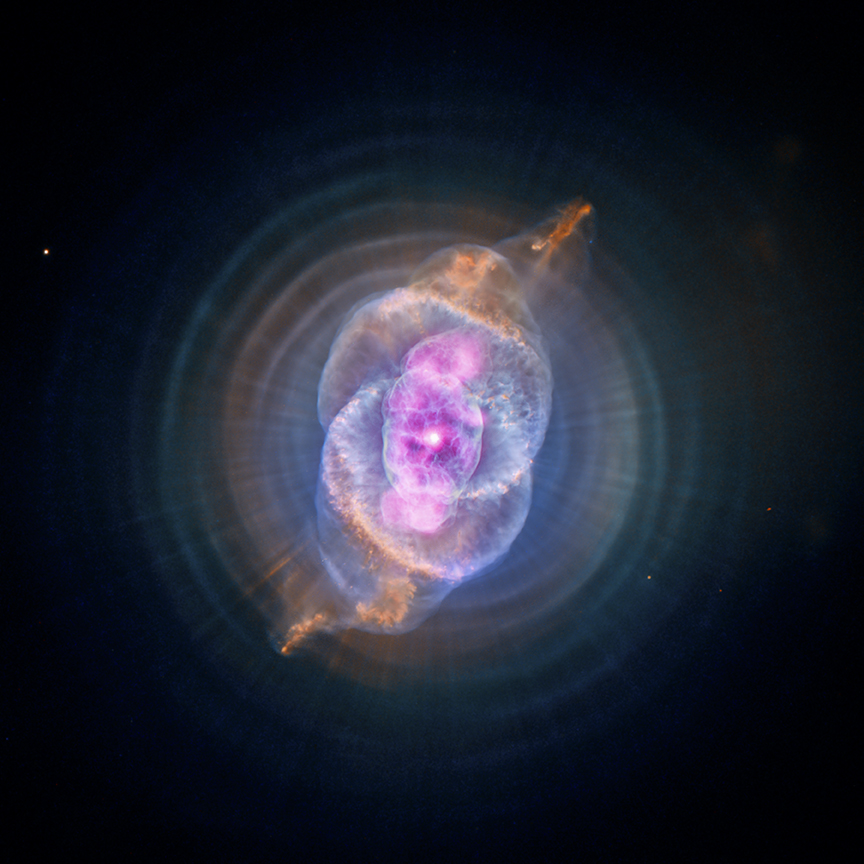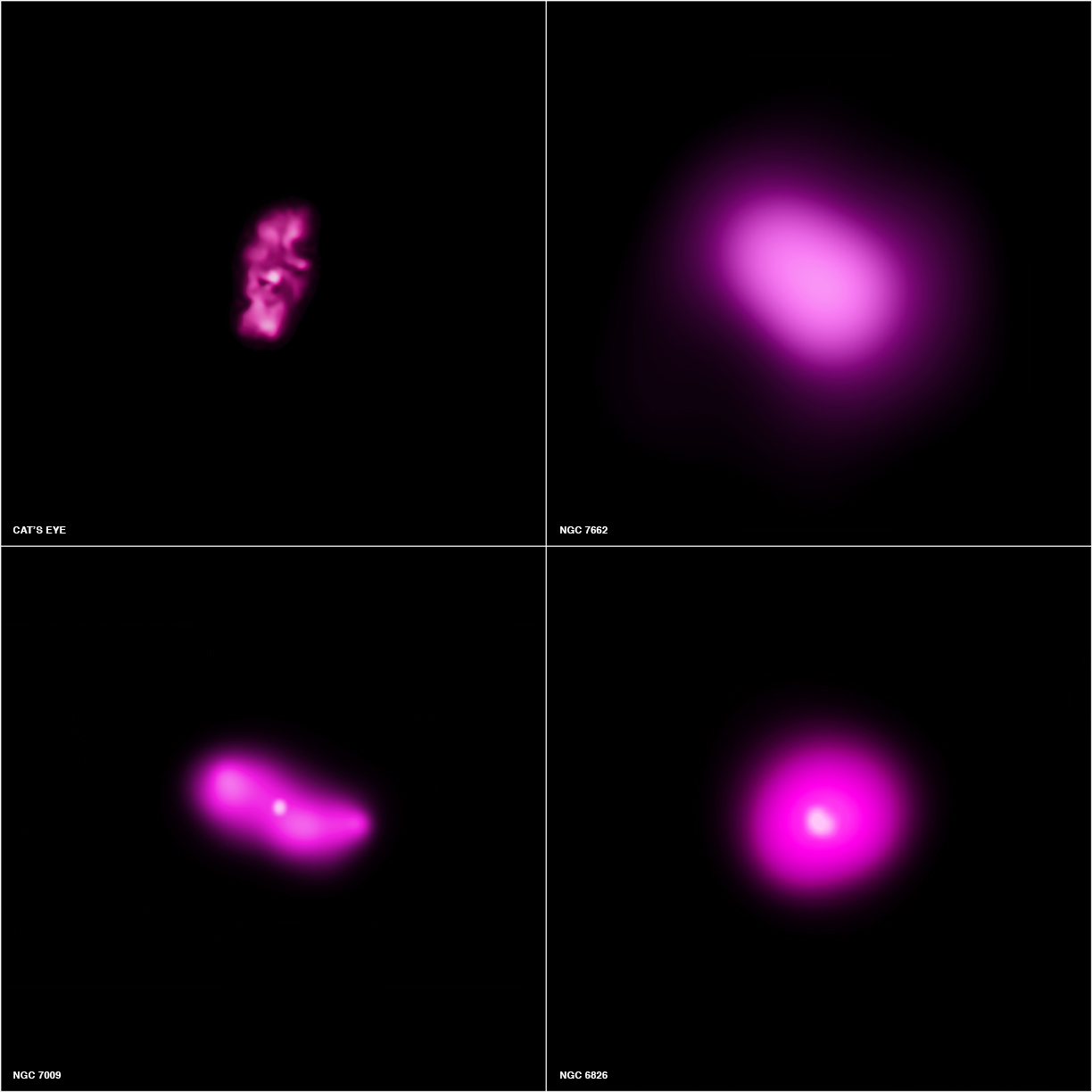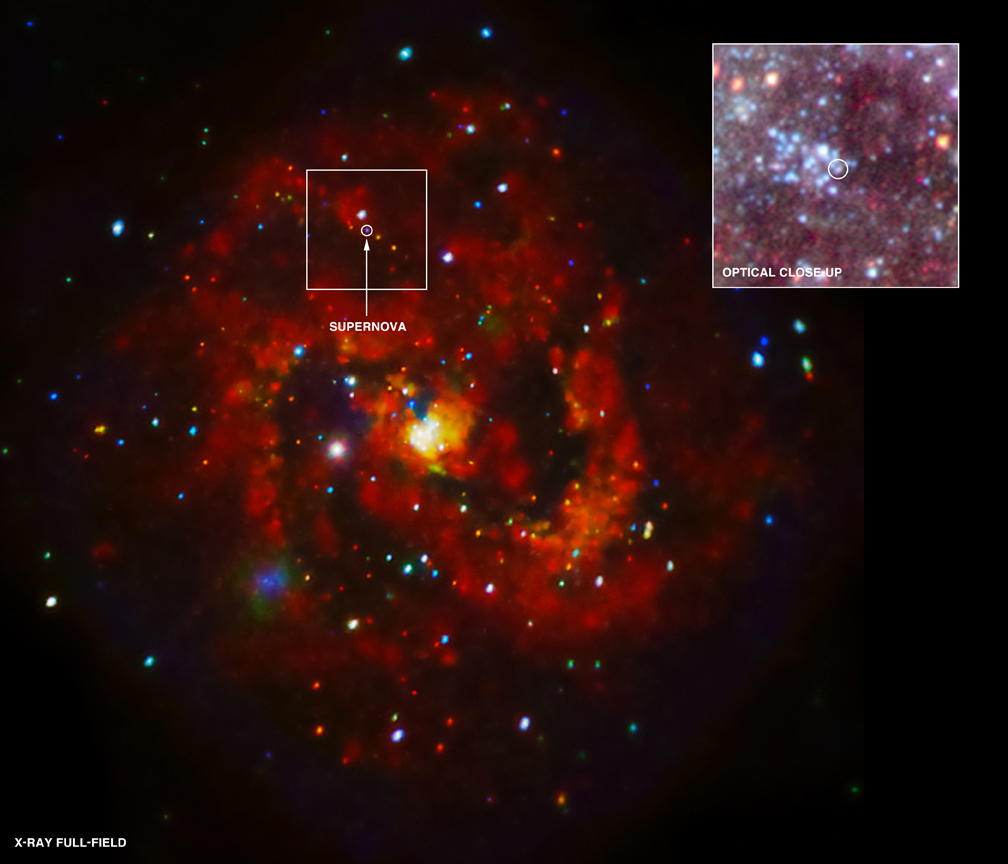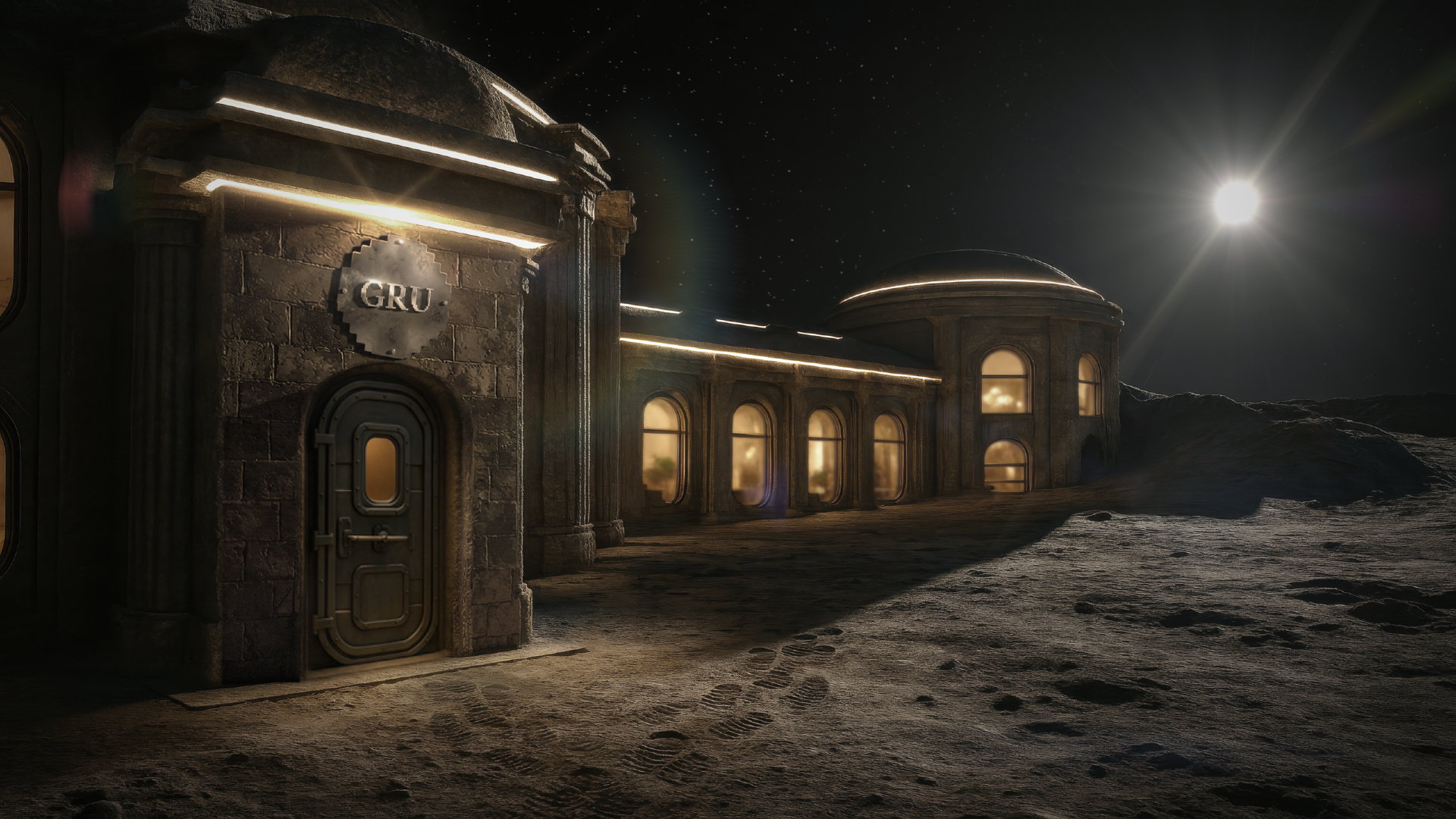Our X-Ray Universe: Amazing Photos by NASA's Chandra X-Ray Observatory
Chandra Image of NGC 7662
This image is of planetary nebula NGC 7662 as seen with the Chandra X-Ray Observatory. A planetary nebula is a phase of stellar evolution that the sun should experience several billion years from now, when it expands to become a red giant and then sheds most of its outer layers, leaving behind a hot core that contracts to form a dense white dwarf star. This image was released Oct. 10, 2012.
The Cat's Eye Nebula or NGC 6543
This image is NGC 6543 known as the Cat's Eye Nebula as it appears to the Chandra X-Ray Observatory and Hubble Telescope. A planetary nebula is a phase of stellar evolution that the sun should experience several billion years from now, when it expands to become a red giant and then sheds most of its outer layers, leaving behind a hot core that contracts to form a dense white dwarf star. This image was released Oct. 10, 2012.
A Planetary Nebula Gallery Composite
This gallery shows four planetary nebulas from the first systematic survey of such objects in the solar neighborhood made with NASA's Chandra X-ray Observatory. The planetary nebulas shown here are NGC 6543, also known as the Cat's Eye, NGC 7662, NGC 7009 and NGC 6826. This image was released Oct. 10, 2012.
The Crab Pulsar
This image, which combines data from the Hubble Space Telescope (visible light), Spitzer Space Telescope (infrared) and Chandra X-ray Observatory (X-rays) shows the Crab Pulsar. The X-ray emissions (in blue) show the location of high-energy phenomena around the rapidly spinning star. The visible and infrared light (shown in red) traces the location of debris thrown out by the supernova that destroyed the Crab Pulsar's progenitor star.
X-ray Emission Image of Planetary Nebula Gallery
This gallery shows four planetary nebulas from the first systematic survey of such objects in the solar neighborhood made with NASA's Chandra X-ray Observatory. The planetary nebulas included here are NGC 6543 (aka the Cat's Eye), NGC 7662, NGC 7009 and NGC 6826. X-ray emission from Chandra is colored purple and optical emission. This image was released Oct. 10, 2012.
Chandra Superbubble
This superbubble in the N44 nebula inside the Large Magellanic Cloud was carved out by exploding stars. The photo, released in August 2012, comes from the Chandra X-ray Space Telescope, combined with data collected by observatories covering other wavelengths.
Chandra's X-ray View of a Pulsar
X-ray image of the vicinity of pulsar J1740+1000 obtained by NASA's Chandra X-ray Observatory. The image is color-coded so that harder X-ray emission looks bluer and softer X-ray emission appears redder. The angular distance of 4 arcminutes (shown) corresponds to 5.3 light-years.
Breaking space news, the latest updates on rocket launches, skywatching events and more!
SN 1957D in M83: X-Rays Discovered from Young Supernova Remnant
This new Chandra image of M83 is one of the deepest X-ray observations ever made of a spiral galaxy beyond our own. This full-field view of the spiral galaxy shows the low, medium, and high-energy X-rays observed by Chandra in red, green, and blue respectively. Image released July 30, 2012.
Spiral Galaxy M83
NASA's Chandra X-ray Observatory has discovered an extraordinary outburst by a black hole in the spiral galaxy M83, located about 15 million light years from Earth.
X-Ray Images in the Eagle Nebula
Chandra's X-ray Observatory reveals x-ray images in the Eagle Nebula, although few are visible within the Pillars of Creation

Space.com is the premier source of space exploration, innovation and astronomy news, chronicling (and celebrating) humanity's ongoing expansion across the final frontier. Originally founded in 1999, Space.com is, and always has been, the passion of writers and editors who are space fans and also trained journalists. Our current news team consists of Editor-in-Chief Tariq Malik; Editor Hanneke Weitering, Senior Space Writer Mike Wall; Senior Writer Meghan Bartels; Senior Writer Chelsea Gohd, Senior Writer Tereza Pultarova and Staff Writer Alexander Cox, focusing on e-commerce. Senior Producer Steve Spaleta oversees our space videos, with Diana Whitcroft as our Social Media Editor.
